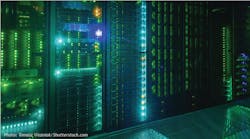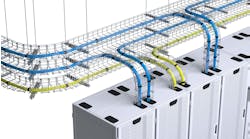A Sensible Path to Data Center Sustainability
New and developing technologies like artificial intelligence and 5G are driving data center energy demand, while at the same time sustainability is top of mind for customers, who are demanding the industry reduce its energy consumption. This launches our article series on paving a sensible path to sustainable data centers.
Get the full report
Data center operators are caught in the squeeze: They need to manage rapid growth while at the same time reducing energy usage and moving to more sustainable energy sources. These goals are not mutually exclusive. There are immediate steps operators can take to switch to green energy in ways that aren’t disruptive to their business while undertaking a longer-term campaign to shift to more sustainable infrastructure.
Doing this in the current growth climate is a challenge. The global data center market is expected to grow more than 18% annually to nearly $520 billion in 2025, according to research firm Technavio. Operators are under particular scrutiny as the U.S. Department of Energy estimates the data centers consume 10 to 50 times as much energy per square foot as a typical commercial office building. Altogether, facilities account for an estimated 2% of total U.S. electricity use.
Source: Technavio
While hyperscale operators, in particular, have made great strides in reducing power use over the past decade, future progress will be more difficult. The Uptime Institute last year noted that “the energy requirements resulting from increasing IT demand are beginning to exceed the efficiency improvements made in the past decade.” What’s more, the widespread rollout of 5G technology — which is three times more energy-intensive than 4G — will further drive energy demand. A 2020 report by the European Union projected that 2025 data center energy use will exceed 2018 levels by 21%.
Stakeholder demands
This thirst for power comes at a time when executives and customers are more attuned than ever to the need to reduce greenhouse gas emissions. More than 90% of CEOs say sustainability is important to their companies’ success and nearly half of the top 100 U.S. MBA programs offer academic programs on business sustainability, according to Stanford Social Innovation Review. Green is good for business: An overwhelming 87% of respondents to a 2017 survey of American consumers said they would prefer to buy products with social and environmental benefits and 92% are more likely to trust a company that is addressing environmental concerns.
Sustainable technology is making great strides. New data centers can be built to net-zero emissions standards and even absolute zero-emission standards. Hyperscalers have been leading the way. Microsoft has said it intends to eliminate all greenhouse gas emissions in its facilities and its supply chain by 2030. Amazon Web Services has set a goal of powering its operations with 100% renewable energy by 2025 and Google says it intends to be the first major company to operate carbon-free by 2030.
Most companies don’t have the hyperscale resources, though. Operators of older data centers, in particular, must contend with diesel-powered backup generators and the need to use the electrical grid for reliable power. There is also pressure on them to contain costs and wring as much life as possible out of their existing investments.
Room to improve
Sustainability has not historically been a high priority. Uptime’s annual 2021 Global Data Center Survey found that while:
- 82% of data center managers track electricity usage, and
- 70% monitor power usage effectiveness,
- Only one-third monitor their carbon impact.
Navigating a path toward a sustainable future will be challenging for the two-thirds of companies that don’t monitor their emissions as something that isn’t measured it hard to improve.
Data center operators have been reluctant to jump fully into using sustainable resources for good reasons. They require power that is both high-quality and predictable. Voltage fluctuations and dropouts of as little as 30 milliseconds can damage IT equipment and trigger expensive outages. A realistic approach is to move to sustainable energy sources in a staged and methodical process that minimizes disruption, extracts maximum value from existing infrastructure, and steadily reduces overall energy consumption.
Download the entire paper, “Getting to Green: Paving a Sensible Path to Sustainable Data Centers,” courtesy of Kohler, to learn more. In the next article, we’ll look at the status of major renewable energy sources.





